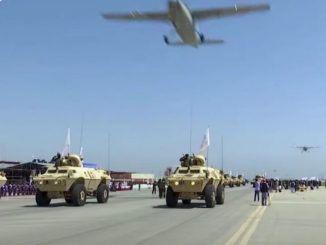
US President Trump doubles down on his assertion that the Iranian nuclear programme has been set back by decades.
US President Trump doubles down on his assertion that the Iranian nuclear programme has been set back by decades.
📰 Key News Coverage
Pentagon reveals 15‑year preparation for Fordow strikes
-
General Dan Caine confirmed that the U.S. military spent roughly 15 years developing the Massive Ordnance Penetrator (MOP) to reach and destroy the deeply buried Fordow facility inside a mountain
-
The June 22 strikes—dubbed Operation Midnight Hammer—used six B-2 bombers to deliver multiple 30,000-pound bunker-busters to Fordow and Natanz
Conflicting intelligence on impact
-
An initial DIA assessment, leaked to CNN and Reuters, stated that while above-ground structures were damaged, the core enrichment systems and uranium stockpile were not destroyed, delaying Iran’s program by only a few months
-
President Trump, Pentagon’s Pete Hegseth, and Gen. Caine rejected the leak, with Hegseth calling the strikes a “resounding success” and saying there’s no known intel Iran moved uranium beforehand.
New intelligence voices heavy damage
-
CIA Director John Ratcliffe and DNI Tulsi Gabbard later announced new, credible intelligence suggesting Iran’s nuclear sites were severely damaged and would require years to rebuild.
-
Analysts from CBS News corroborate this — describing the delay as “likely to have set back the program by years,” citing multiple intelligence sources .
 Operational Successes and Intelligence Setbacks
Operational Successes and Intelligence Setbacks
🛡️ Operational Successes
1. Precision Bunker-Buster Deployment
-
After 15 years of preparation, the U.S. deployed GBU-57 Massive Ordnance Penetrators, each weighing 30,000 pounds, designed specifically to destroy deeply buried targets like Fordow.
-
B-2 Spirit bombers executed the strike with zero detection, a feat in stealth and coordination.
-
The Pentagon claims direct hits on Fordow and Natanz, citing pilot reports and infrared battle damage assessments.
2. Technological Milestone
-
This was the first known combat use of enhanced GBU-57 variants, marking a significant evolution in U.S. bunker-busting capabilities.
-
Officials described the strike as “flawless in execution” with no U.S. casualties or aircraft lost.
3. Global Strategic Messaging
-
The operation signaled to adversaries (especially North Korea and China) that U.S. strategic deterrence and long-range strike capability remains credible and immediate.
-
U.S. allies like Israel and Saudi Arabia praised the mission’s boldness and timing.
🧠 Intelligence Setbacks
1. Uranium Stockpile Movement Uncertainty
-
European intelligence agencies claim that Iran moved large portions of its enriched uranium away from Fordow before the strike.
-
Early Defense Intelligence Agency (DIA) assessments suggest only months-long disruption to Iran’s program—because key stockpiles and centrifuges may have been spared.
2. Contradictory U.S. Narratives
-
While the Pentagon and CIA Director Ratcliffe later claimed that years of delay were inflicted, leaked DIA memos suggest otherwise.
-
This contradiction has sparked concerns over politicization of intelligence, similar to pre-Iraq War debates.
3. Limited Satellite Evidence (So Far)
-
Commercial satellite imagery shows structural damage to entrances and auxiliary buildings, but subterranean impact remains unclear.
-
Iran has restricted IAEA access, complicating independent verification.
 Bottom Line: Operational Precision vs. Strategic Ambiguity
Bottom Line: Operational Precision vs. Strategic Ambiguity
The U.S. strike on Iran’s Fordow nuclear facility marked a tactical success, showcasing years of military planning, stealth capability, and advanced bunker-busting technology. The Pentagon executed a clean mission with precise delivery of GBU-57 bombs, fulfilling a long-held objective to demonstrate America’s ability to neutralize deep nuclear threats.
However, intelligence uncertainties cloud the strategic payoff. Conflicting assessments—between early DIA leaks and later CIA/DNI statements—raise questions about how much of Iran’s nuclear program was truly crippled. Reports that enriched uranium was moved beforehand, if accurate, suggest Iran outmaneuvered U.S. timing, preserving the heart of its nuclear work.
In the end, the operation sends a strong deterrent signal, but the long-term impact on Iran’s nuclear capability remains inconclusive without verified inspections or clear satellite proof.
SOURCES: REUTERS – Early US assessment suggests strikes on Iran did not destroy nuclear sites, CNN reports
AL JAZEERA – US didn’t destroy Iran’s nuclear programme: Here’s what new intel says





‘Not what reporting is’: Karoline Leavitt torches CNN reporter’s ‘fake and false’ narratives
https://www.youtube.com/watch?v=aT_LworspjU
It Doesn’t Matter if Iran Can Build a Bomb. It Matters if America Has the Guts To Bomb Them, Again
https://www.youtube.com/watch?v=GuQlOoONoM4
Iranian ability to have a nuclear weapon is ‘finished’
https://www.youtube.com/watch?v=9HIk3DYse-M